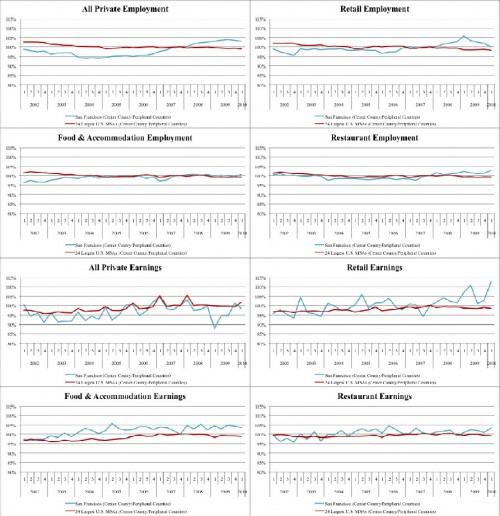In the new NBER paper The Labor Market Impact of Employer Health Benefit Mandates: Evidence from San Francisco’s Health Care Security Ordinance, Carrie Colla, William Dow, and Arindrajit Dube explore what happened in the San Francisco labor market after the city implemented a pay-or-play employer health insurance mandate in 2008. Their conclusion: not job killing.
We find that, compared to control counties, employment and earnings patterns in San Francisco did not change appreciably following the policy. This was true for industries most affected by the mandate, as well as for overall private sector employment. The results are generally robust to inclusion of different control groups, county-specific time trends, and varying pre-periods. In contrast to the small effects on the labor market, we do find that about 25% of surveyed restaurants imposed customer surcharges, with the median surcharge being 4% of the bill. These results indicate that while little of the burden of the mandate fell on San Francisco workers, approximately half of the incidence of the mandate fell on consumers.
Even, or especially, in San Fran restaurants, there is no such thing as a free lunch. Somebody has to pay for the employer mandate. According to this study, it wasn’t workers.
The key set of charts follows. See a big loss of jobs or wages as the mandate was implemented in 2008? Me neither. Nor do the study authors who went on to do far more sophisticated analysis than is revealed in these charts. Click to enlarge. It’s still blurry, but so is the original. It may help to know that the blue line is San Francisco and the red line represents 24 other large metropolitan statistical areas.


